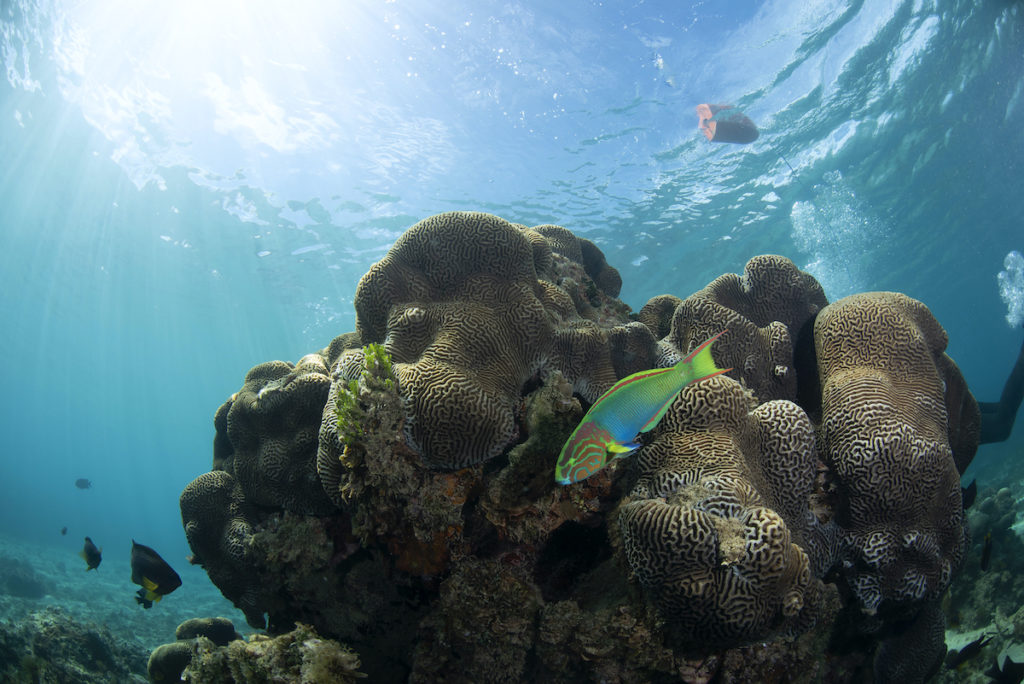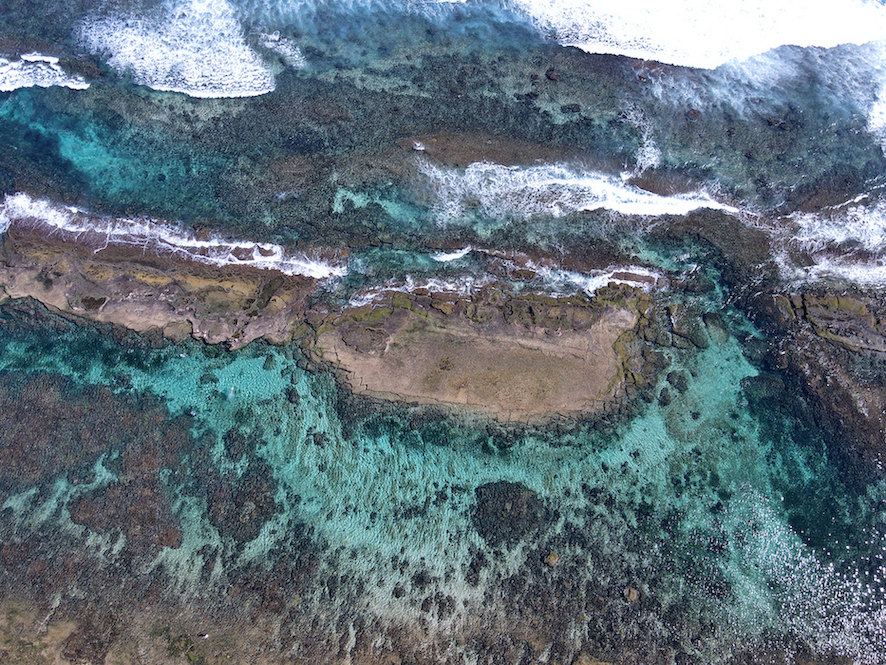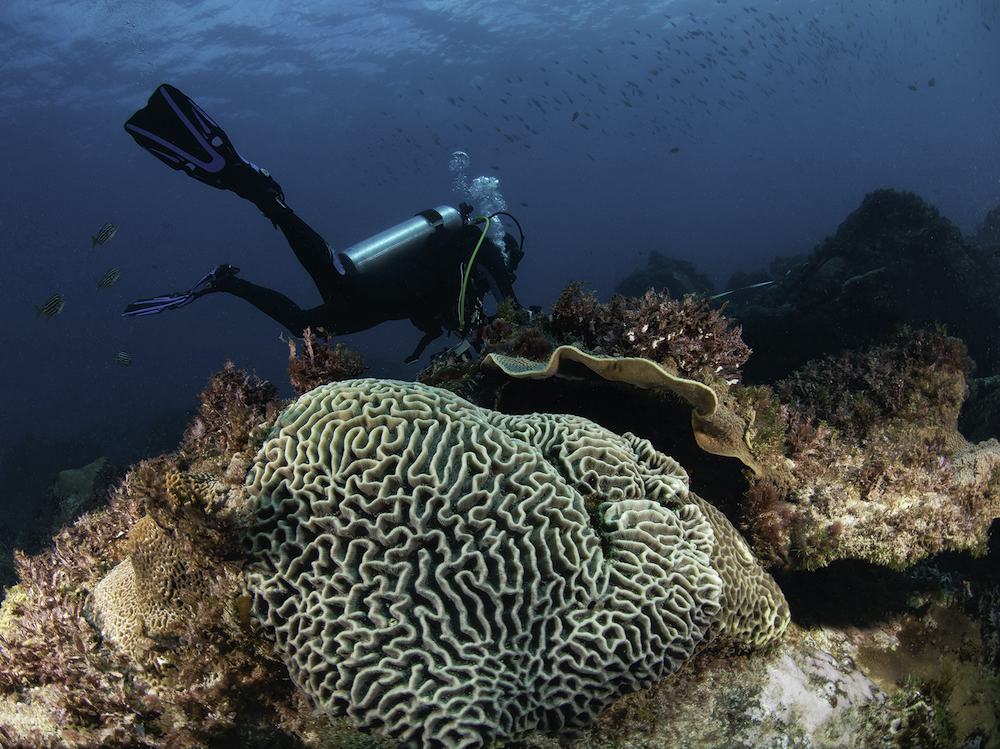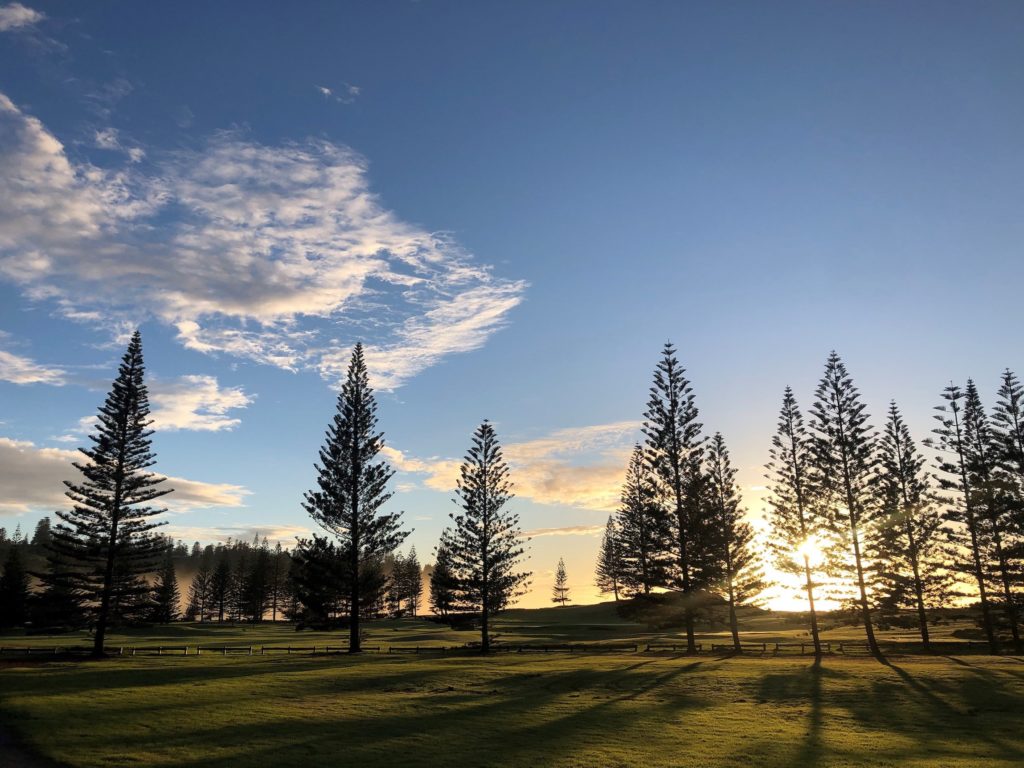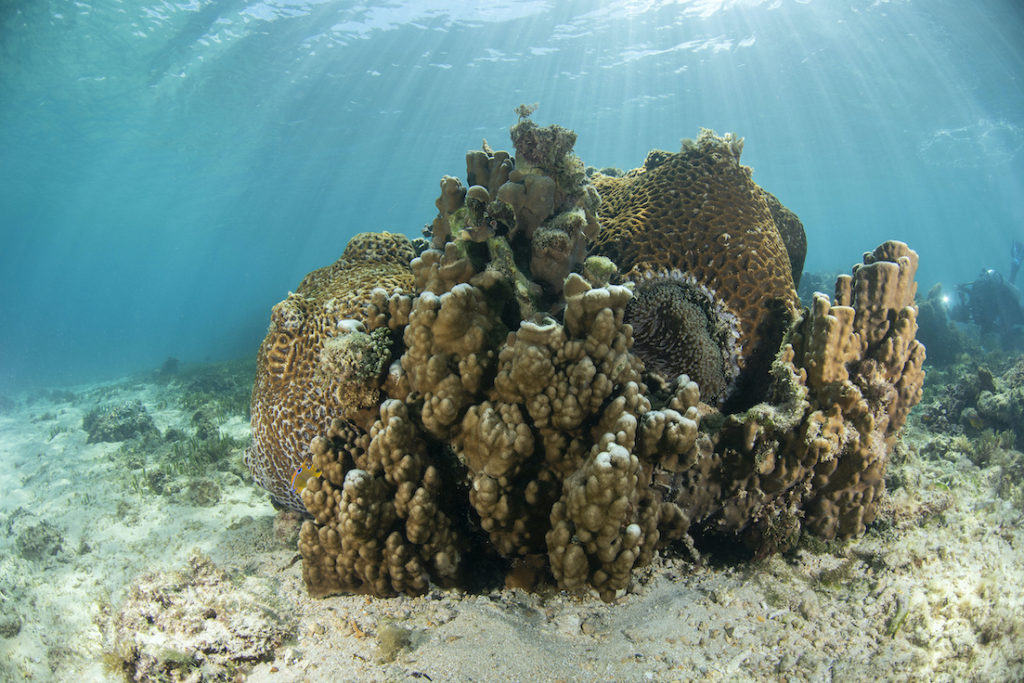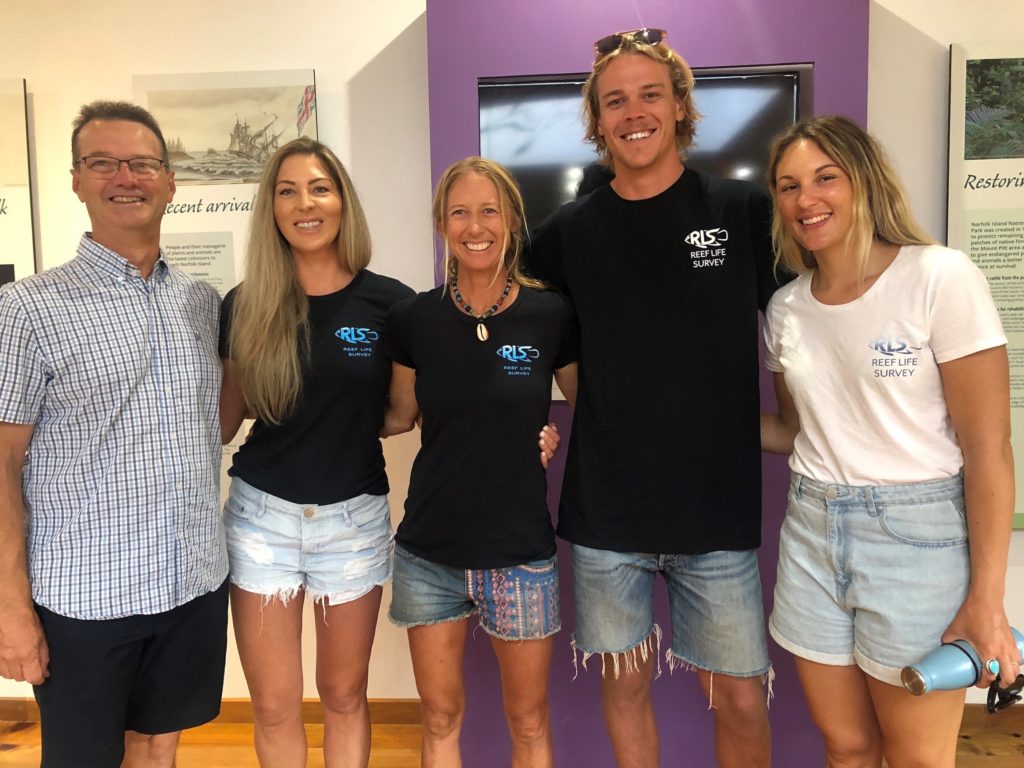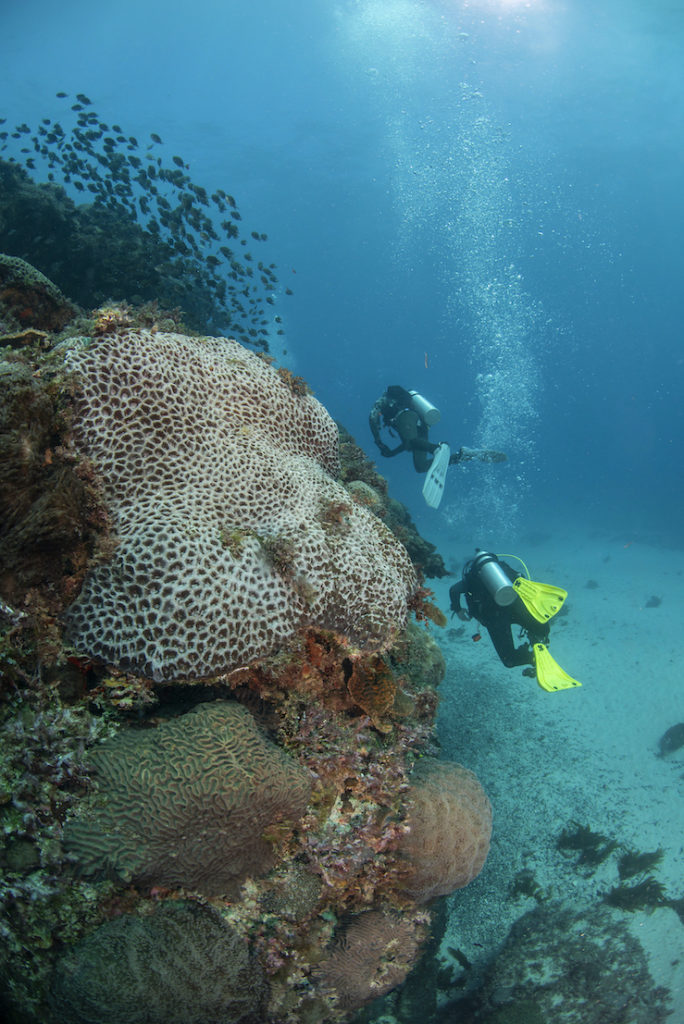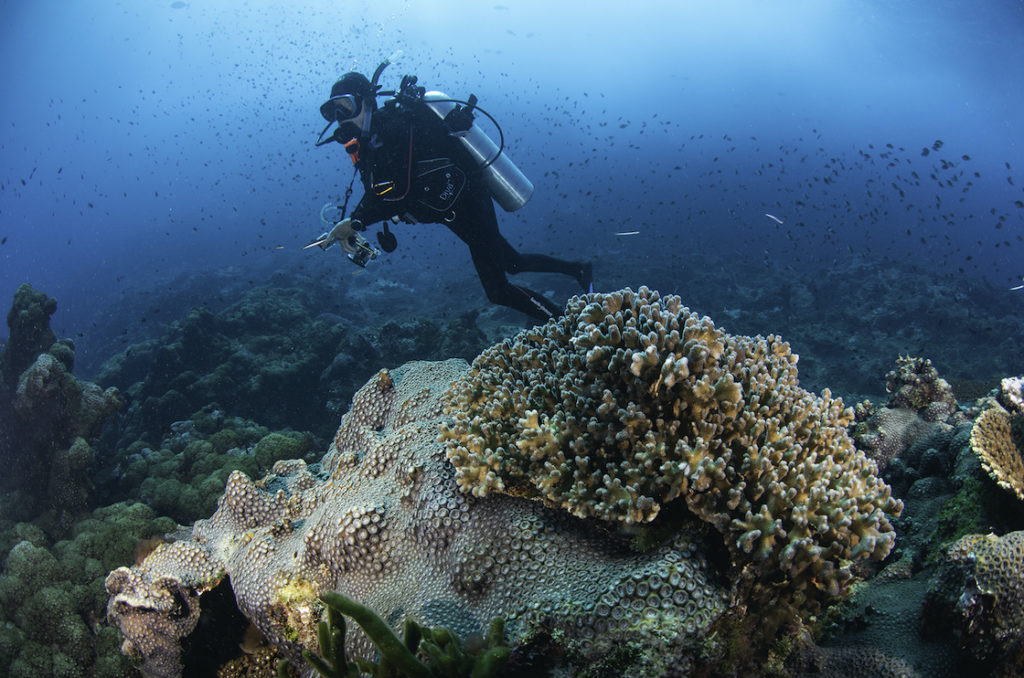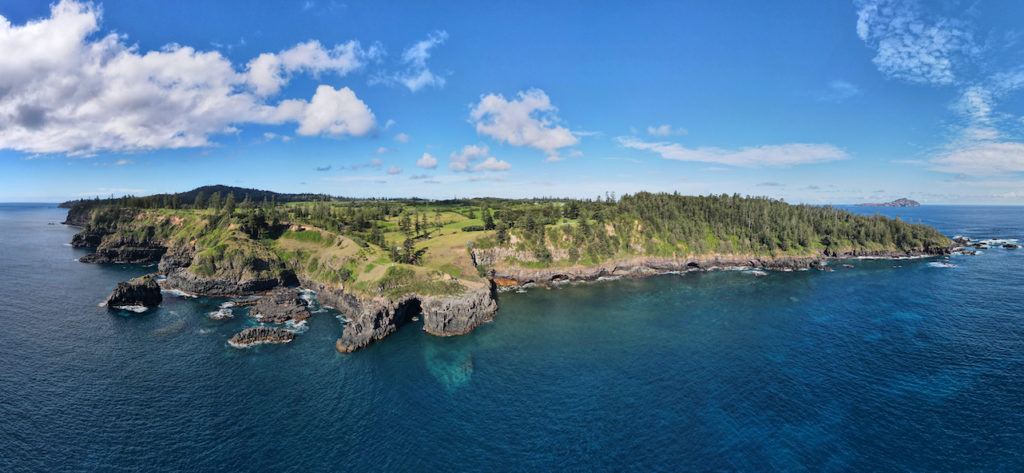Located in the Pacific Ocean between New Zealand and New Caledonia, a 2.5 hour flight from Australia, and formed from several volcanic eruptions, the ancient cliffs of Norfolk Island have 32 km of very steep and rugged coastline that were formed between 3.1 and 2.3 million years ago. Like stepping back in time (or on 'island time') Norfolk Island is a culturally-rich, friendly and really beautiful island, where wandering cows have right of way, Norfolk Pines are in every view and everyone has time to stop and chat. The vistas from the sheer cliffs and lookouts provide an endless expanse of inky blue ocean, with foaming white-water swirling against the rugged Jurassic cliffs below. If above water is gorgeous, then below water is even more breath-taking – the crystal-clear waters providing an array of diverse and colourful coral and algal dominated reefs with a diversity of fish and marine life.
But… being a remote and rugged island in the middle of the Pacific presents a range of challenging logistics for divers. Getting into that blue water from steep, sheer cliffs, many at a 90-degree angle to the ocean, is the first hurdle. There are very few shore dives options, apart from a semi-protected bay on the southern side of the island. Insert local dive operator Mitch Graham, who is a true water man, a wealth of knowledge, and one of the most accommodating skippers we have come across.
Because of these cliffs, launching boats on Norfolk Island involves a derrick or hydraulic crane rather than boat ramp, and it surely is an operation to behold! The survey sites are located on nearly all sides of the island and the weather conditions made many days challenging to access some of our sites. Luckily, the Lagoon sites (Emily Bay and Slaughterhouse Bay) provide protected options around the low tide, although many days the swell was so large that it was breaking over the fringing reef. Outside the small Lagoon there are two larger uninhabited offshore Islands – Phillip and Nepean (where there are more survey sites) and several smaller islets, where beautiful diverse coral reef and algal communities exist beneath the surging waves.
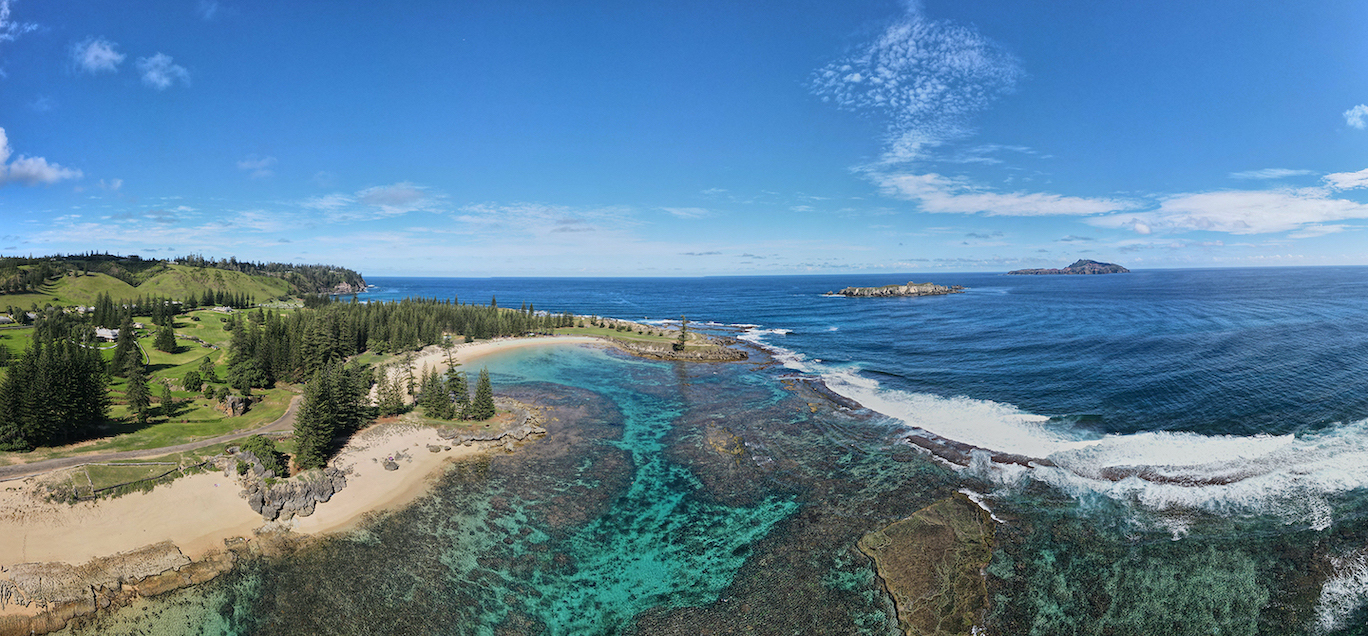
The offshore reefs welcomed us with clear warm (ish – 23-24 degree) water, where the myriad of hard and soft corals, mixed with colourful macro-algae diversity were a feast for us all. The fish life was abundant and diverse, with many similar species to those found within the Lord Howe Island Marine Park some 900km to the south-west. Massive schools of Chromis hypsilepis and Chrysiptera notialis, the curious and protective Parma polylepis and the ever-present Luculentus wrasse (Pseudolabrus luculentus) were some of the most commonly recorded fish species, with also a notable abundance of Coris sandeyeri, Kyphosids, Prionurus maculatus and Notolabrus inscriptus.
Centrostephanus rodgersii, Heliocidaris tuberculata and Ophidiaster confertus were among the most common invertebrate critters. John’s favourite fish, the strawberry rockcod (Trachypoma macracanthus), black-cheeked threefin (Enneapterygius rufopileus), Norfolk Island blenny (Parablennius serratolineatus) dominated the cryptic fishes counts, while Acanthistius cinctus was also often seen hidden within the coral ledges and overhangs. I was lucky enough to sight and score a protected black cod (Epinephelus daemelii) but all divers noted the lack of larger fish and top order predators during surveys. We did see an abundance of Dusky (Carcharhinus obscurus) and Galapagos (Carcharhinus galapagensis) sharks at the jetty after fishing boats returned from their days fishing, so there are definitely sharks and rays around but most likely in deeper areas further offshore.
The team consisted of Toni - our intrepid leader and personal ‘get it all sorted’ survey expert; John - our personal videographer and ‘new-sightings’ extraordinaire, Jamie - RLS’s South Oz primary survey organiser, lover of mosquitos (and owner of one very ‘distinctive’ wetsuit); Tyson – our tall, energetic and over-enthusiastic PhD student (who was somehow also in-charge one very expensive 360 camera known as ‘baby box’) and myself (Sal).
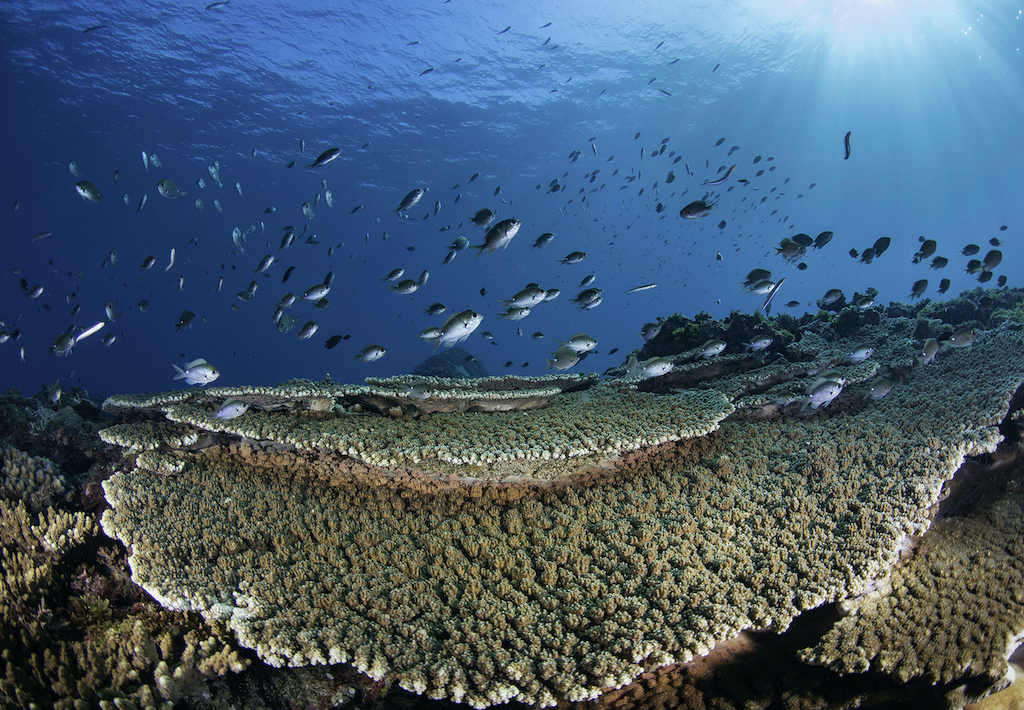
RLS have conducted surveys on the reefs around Norfolk Island in 2009 and 2013 and to date the species list had consisted of 162 species recorded in 42 surveys across 13 sites.
On this 2021 survey trip, the team completed 32 surveys over 15 sites and recorded 102 fish species (16 of which were new sightings for our RLS Norfolk Island surveys), 67 invertebrate and cryptic fish species (19 of which were new records for our surveys). Some of the new sightings included the blue mao mao (Scorpis violacea), convict surgeonfish (Acanthurus triostegus), the blue-band glidergoby (Valenciennea strigata), sergeant major (Abudefduf vaigiensis), chestnut blenny (Cirripectes castaneus), Susan’s flatworm (Pseudoceros susanae), red-ringed nudibranch (Ardeadoris-rubroannulata), fine-net peristernia (Peristernia nassatula) and an undescribed weedfish.
Despite the challenging weather and bare shelves at the supermarkets (there hadn’t been a shipment of fresh supplies to the island since December), the team put in an awesome effort to complete the core sites plus a few extra transects.
The last night saw an impressive turn out at the local Botanical Gardens Education Centre for our RLS presentation to the local community. John gave his energetic interpretation of how easy it is to love doing RLS surveys and had the crowd in awe and wonder with his photos, video and contagious enthusiasm. The locals in attendance had some great questions and it was so encouraging to hear how keen the locals are to know more about their reefs and how to get involved in RLS in the future.
Norfolk Island forms part of Australia’s Temperate East Network of Marine Parks and the trip was made possible with the support of Parks Australia and The Ian Potter Foundation. A huge thank you to the following: to local dive operator Mitch Graham ([email protected]) – your local knowledge and enthusiasm made every day a pleasure (and an adventure); to Robyn (Tradewinds Country Cottages) for your fantastic accommodation and never ending kindness towards us; to Sharyn and the Prinke Ecostore staff for the amazing products and service you have created to help protect the island’s environment (and for your amazing coffee and chai); thank you to Fran Murray from Parks Australia for helping facilitate the presentation and for your general guidance, to Marg, Helen and Mark from the Flora and Fauna Committee and Botanical Gardens for helping organise and promote our public talk and to the locals who joined us; and to Aidie for being an awesome local guide and just so fun to hang out with. To the locals, thank you for having us on your rich (both culturally and naturally) island - we thank you all and we can’t wait to be back there again – there is so much more to explore (and survey!).
